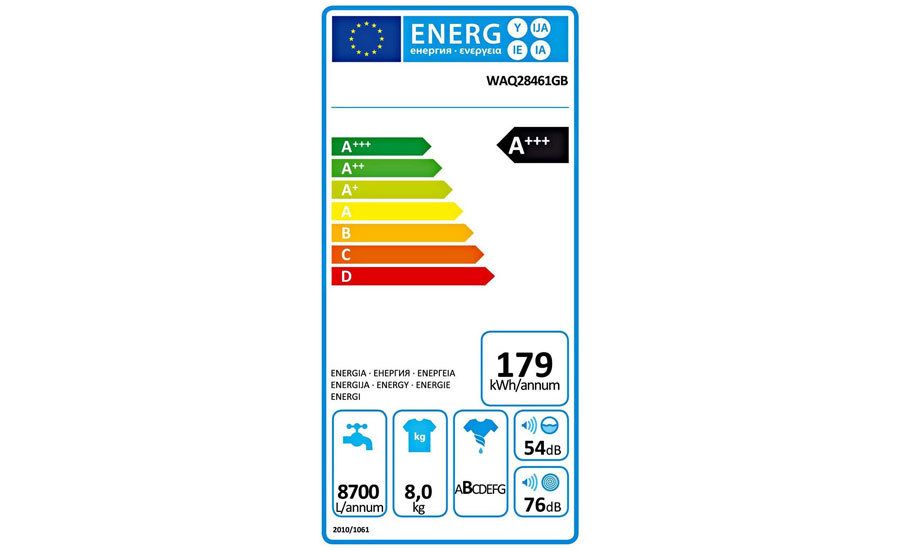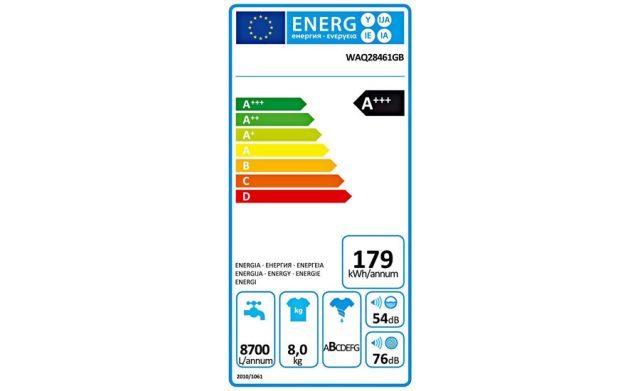 Articles
Articles
Where’s That Sound Coming From? Sound Localization and Healthcare PPE
My colleague Alex Odom recently wrote a blog post on speech intelligibility with facial mask coverings. I am following this up with a post examining another…


This is a transcript of an article which originally appeared in Appliance Design.
It has been said that noise is among the top five factors in a shopper’s decision to buy an appliance. This consumer sensitivity, and the increasing competition from Europe where strict noise standards reign, is an important motivation for product noise reduction. But having achieved this, how does one go about informing the consumer of this hard earned competitive edge? As you probably already know, this is not an easy task.
First, how exactly does one describe a product’s noise in a simple manner that can be easily understood by a consumer and used to compare competing products? Ideally it would seem that there should be a single number, prominently displayed in advertising and on a label on every product, like the price or energy rating. But in the U.S., unlike in Europe and internationally in general, there are no enforced labeling standards. Advertising too often simply touts claims—often without justification—like “quiet” or “silent operation” that provide little or no information. Sometimes a sound decibel value will be given, but without specification of under what operating conditions and where it was made. At one foot? One meter? In what direction? In all directions? Is the value given in dB(A), A-weighted by frequencies to reflect the frequency response of the human auditory system? So the first issue is describing a product’s noise to consumers in a meaningful way.
What is the best way to describe a product’s noise? Is it the noise experienced by a person using the appliance at some operating condition? Or is it a measure of the total noise made that accounts for all geometric locations around it? These two measures are referred to as “immission,” the sound at some listener’s ear, and “emission,” a measure of the total of all sound emitted by the product. Immission is described in terms of metrics like the loudness of the sound, or its sound pressure level usually in dB(A), the measure reflecting the sensitivity of the typical human auditory system, made at some specific location. This is the familiar metric one often sees comparing various noise levels and setting standards for noise exposure when the levels are high.
The latter measure, emission, is intrinsic to the appliance without regard to the environment. It is a measure of the total acoustic energy radiated in all directions. As an example, consider a lawn tractor, where an immission measure can describe what the driver will hear, while the emission measure can provide insight into what the neighbors will hear. Emission is usually reported as a total power of the noise emitted in all directions, summed over all frequencies. (This power is subjected to the same A-weighting used in sound pressure levels to account for human audition.) This is measured in picowatts (10-12 watts), more specifically in decibels referenced to one picowatt, or 10*log (total power emitted/1 pW) and reported as dB(A) re 1 pW. This measure is attractive in part because it is a single number that can unambiguously characterize an appliance. As a precaution, note that as sound pressure level and sound power level are measures of quite different quantities, as a rule they cannot be directly compared, although rankings of appliances based on the two measures would be expected to be similar.
Just to backtrack a bit, it is interesting to consider the process of measuring these two kinds of metrics, and their implications to product design. Sound pressure level is typically measured at prescribed distances from and directions to the product with a sound level meter in an anechoic environment, one in which the sound directly radiated by the appliance is measured without reflections from walls or other structures. Sound power level is commonly measured in a reverberant room, one without any absorption. As a result of many wall reflections the total sound emitted fills the reverberant room and is measured. The design process itself should consider both measures, with an eye on how the product’s noise will be characterized in its marketing. For example, an appliance with highly directive noise characteristics can have a low sound pressure level if the noise is aimed away from the position of a user but could, at the same time, also have a high sound power level.
Finally we should note that measures of overall noise do not fully describe the acoustical impacts of a product, which also includes its sound quality—the measure of subjective attributes such as acceptability or “pleasantness” of sound, which depends on, for example, its frequency spectrum and its temporal behavior as well as user expectations for that particular type of product. A simple example is tonality; a product producing significant energy at one frequency can be far less pleasant than one without a tone at the same sound pressure level. Unfortunately, sound quality measures are typically too multifaceted to be boiled down to simple numbers appropriate for labels.
All these complexities beg the question of how to effectively describe a product’s noise to motivate the consumer to appreciate its desirability and select it on a rational basis. Unfortunately in the U.S. today, this is all but impossible given the lack of standards. Suppose you list a realistic value of, say, sound power level but to an unsophisticated consumer this looks unfavorable to a competitor’s claim of a lower sound pressure level without any reference to distance. Without enforceable standards such as used in Europe, there can be no level playing field.
One of the only sources of consistent noise comparisons in the U.S. is the Consumers Union organization. While their ratings in Consumer Reports may not have always gained universal endorsement, their reports are widely followed and their approach is certainly worth considering. Aspects of their methodology were described at a symposium1 put on by the Institute for Noise Control Engineering. Consumer Reports measures A-weighted sound pressure levels (SPL) and uses a group of sensory panelists to evaluate sound quality, with the goal to allow consumers “to understand a complicated topic at a glance.” Measurements of sound pressure level are typically made at the location of users of products (immission) and at other locations where people may be exposed. Their well-known ratings, given in terms of full red to full black circles in a five-level rating system based on these measures, are sometimes augmented by a narrative.
European and other international labeling standards have been implemented and made mandatory to support. Standardized noise information is reported in terms of sound power level on the EU Energy Label for household appliances, which must be prominently displayed on the appliance in stores and on packaging. This label must appear on refrigerators, freezers, washing machines, dryers, dishwashers, and air conditioners.
An example of this label for a generic refrigerator/freezer is given in Figure 1. The colorful information at the top describes the energy efficiency, the material in the center describes the performance and capacity, and near the bottom a box is reserved for the noise, specifically identified as dB(A) re 1 pW. Figure 2 shows a label for a washing machine, with sound power levels (the standard measure reported on EU labels and not specifically stated) displayed next to the near-universal speaker-like symbol for sound. This is somewhat more informative than most labels, as it gives sound power for two operating conditions, washing and spinning. The appeal of the simplicity of this type of labeling is obvious
This labeling system would seem to come close to meeting the requirements for an effective noise labeling methodology. The ratings are easily identified, simple to understand, based on a consistent and unambiguously defined noise measure, and prominently displayed. Efforts to establish a comparable rating system in the U.S. are under way, including a program at the Institute for Noise Control Engineering that seeks to develop a simple product noise rating system, based on sound power, that assigns a “PNR” number1 (without the “dB” modifier) to indicate how noisy or quiet a product is.
Hopefully, as pressure continues to grow for quieter home environments in the U.S., a noise rating system will be implemented to support not only consumers, but designers as well, who will have much clearer guidance as to how to make their products as demonstrably competitive as possible in the national and international marketplaces
Figure 1: Generic EU Energy Label for large appliances
Figure 2: Example EU Label for a washing machine
Reference 1:
1. Engineering a Quieter America: Progress on Consumer and Industrial Product Noise Reduction, a Technology for a Quieter America Workshop and International INCE Symposium, sponsored by The INCE Foundation and The Noise Control Foundation, organized by The INCE Foundation, hosted by The National Academy of Engineering, Washington, D.C. and the Institute of Noise Control Engineering of the USA, October 2015.